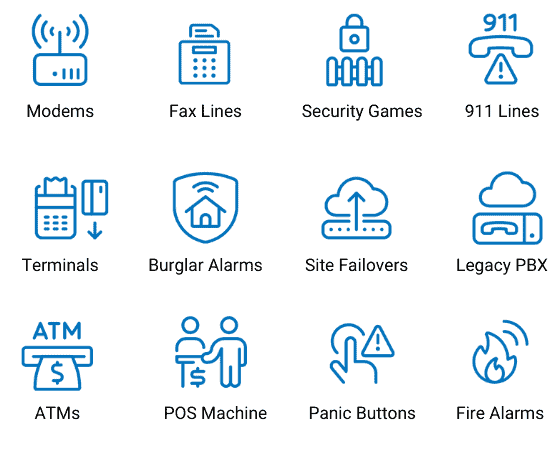
If 2021 demanded we question the way we work, 2022 trends will demand we double down on the right technology investments. As C-level telecom executives tackle goals for the upcoming year, they will face an onslaught of priorities that range from the basic needs of regulatory compliancy to higher level priorities such as network longevity, how to secure their business, and revenue growth.
We looked at the trends in telecom over the past few years, which have been accelerated by the global COVID-19 pandemic, to give service providers guidance on how to meet their customers demand for digital services. Together, these strategic trends will enable you to maximize revenue creation and enhance digital capabilities to win business and market share.
2022 Trends: Cloud-Native Solutions Create New Revenue Opportunities
The shift from equipment-based revenue to cloud services-based revenue has arrived, and now installation, support, and warranty revenues are aligned with equipment sales and experience-based services. To increase revenue streams and reach more customers, telcos need to increase the monetization of their existing assets and offer new and innovative services that meet the needs of their customer base. Organizations must identify, create, and deliver new offerings in shorter life cycles to meet changing customer needs.
SMBs — Ready for Change, Scalability, & Digital Solutions
SMBs are primed for change. Resilient companies that have opened themselves up to change and the need for agility have endured the through pandemic. 2022 is the time for service providers to leverage cloud-based cost savings, increased functionality, and easy onboarding to ramp up net-new customer adoption. Consider these options:
Business Lines — Benefit Your Business
SMBs are ready to make enhancements to business-critical applications, but that doesn’t mean all cloud hesitancy is gone. Long-standing resistance and fear of losing existing functionality have prevented some businesses from making the switch. A solution meets those customers halfway by moving their analog phone lines to the cloud without sacrificing their existing infrastructure or functionality. It’s the optimal choice for service providers to address small office needs for analog devices.
- Turnkey Solution. Ready-to-go, easily deployed solution with high service provider margins — ideal for retail stores, service companies, and more.
- Interoperability. Enhanced flexibility that on-premises solutions can’t keep up with. Integrates with analog phones, key systems, and analog PBXs.
- Perfect for SMBs. SMBs can switch their business phone lines to the cloud without sacrificing reliability, quality, their existing infrastructure, or functionalities.
SIP Trunking — Benefit beyond a New Revenue Stream
Businesses that aren’t ready to abandon their investments in on-premises IP PBX solutions can turn to SIP Trunking for cost savings and flexibility. SIP Trunking creates a connection from a customer’s on-site PBX system to your Voice over Internet Protocol (VoIP) network, using your broadband to replace the telco PRI and connect your customers with the public switched telephone network (PSTN). A single trunk can support a single call to many hundreds of simultaneous calls, meeting the needs of organizations both large and small. Capitalize on this red-hot market to help customers embrace IP solutions and eliminate costly, static TDM connections.
- Simplified Scalability. Easily scale up or down as your customers’ needs change. Flexibility = healthy margins.
- Right-Sized Flexibility. SIP trunk resources are flexible and easy to manage, plus there’s no physical installation or setup necessary.
- Instant ROI. As a cloud-based solution, the majority are no risk, no upfront investment solutions that increases a provider’s speed to market and ROI.
- Set and Forget. SIP trunks are often exceptionally profitable for providers with very low work. This low maintenance solution creates an elevated SMB experience and give providers an opportunity to add a new margin-heavy offering that won’t stress their current support capacity.
2022 Trends: Tech Transformation & Softswitch Replacement
The continued use of TDM-based networking has already become increasingly challenging, with shocking price increases ranging from as much as 30% to 100% for both Multiprotocol Label Switching (MPLS) ports and access circuits. Service providers who continue rely on a legacy softswitch into 2022 are at an elevated risk of service interruptions and shrinking revenue.
While this is a forecasted trend, it is not a tomorrow problem.
2022 is the year for bold moves and increasing the monetization of your network by migrating it to the cloud. As providers consider their options for 2022, here are some risks and considerations to consider.
BroadSoft Softswitch Operational Risks
Many legacy switches still support significant revenue streams for voice — and that’s risky for providers. As system failure rates increase, the cost per subscriber will rise due to fixed operational costs and legacy voice customer turnover.
Service providers using outdated equipment risk service disruptions and declining sales due to:
- Lack of Innovation. Service providers must, at minimum, keep pace with security and compliance regulations and market demand for new UCaaS and collaboration solutions.
- Lack of Support. Many vendors have gone out of business and no longer support older equipment. Additionally, as systems are discontinued, customers will no longer have vendor support and replacement parts will eventually be depleted.
- Aging Workforce: As skilled personnel retire in greater numbers year over year, providers will have an increasingly challenging time locating replacements. The cost to retain those employees or train someone new will be significant.
- Single Point of Failure: Few providers have scaled to implement a nationwide active-active geo-redundant solution to mitigate the risks of failure and network outages.
Legacy Softswitch vs Cloud Communications
As many softswitches and class 5 switches are nearing (or have already reached) end of life, many service providers will need to decide how to address a rapid migration to another solution and evolve their voice networks to be more agile, competitive, and profitable within the next year.
So, what are your options?

Softswitch Exchange

Network Functions Virtualization (NFV)

Cloud-Native Solutions
Did you know, Cisco is now competing with customers? Service providers are now in the awkward position of competing with Cisco, their platform provider. This is not an ideal position to be in as it limits the go-to-market leverage for service providers. It also produces acute conflicts around the strategic aspect of the relationship and impedes successful partnerships, roadmap innovation, and general information flow. So, what are your options?
Read the full white paper for the full details.
2022 Trends: POTS Is Out, Digital Is In
In 2017, the Federal Communications Commission (FCC) told telecom providers to begin sunsetting their plain old telephone service (POTS) lines, which has left service providers in the difficult position of either significantly increasing prices to maintain their legacy copper POTS lines or finding an alternative solution. Most providers have invested considerable time and capital into their current infrastructures, making a full rip and replace cost exorbitant and time prohibitive.
As providers decide the best way to move forward, most will select a digital or cloud-based POTS replacement for flexibility, scalability, and low CAPEX. Here are the top benefits of a cloud-based cooper lines replacements solution:
Cost Reduction. By selecting a market-ready solution, providers can avoid large capital investments and eliminate unpredictable costs for ongoing maintenance, IT staffing, and training. Carrier-grade solutions typically have a flexible pricing model that delivers an immediate return on investment (ROI).
Single Solution Technology. It’s safe to assume that each of your business customers has at least one or two POTS lines that support business-critical applications. A single solution offering would allow service providers to replace every hardline connection with a cloud-based line.
Cloud-based POTS replacement solutions have countless applications, replacing virtually any type of hardline:

2022 Trends: Securing Communications Platforms Is No Easy Task
Communications and collaboration trends are constantly evolving, which means security and regulatory compliance are too. With remote working here to stay, providers and their business customers are facing the challenge of trying to adhere to regulations while employees are outside of their secure work environment.
One of the largest challenges for an organization is understanding how and where various rules and regulations apply, especially in a global market, as a data breach of any sort can result in hefty fines. For example, in 2018 Pacific Gas & Electric was fined $2.7 million for leaving 30,000 records about its information security assets exposed online for 70 days back in 2016, which occurred after a third-party vendor had improperly copied data from the utility network to their own network. The increasing number of mobile, WFH, and flexible work agents only adds to the complexity.
2022 Trends: Regulatory Compliance — E911 is Not Optional
In 2022, compliance with Kari’s Law and RAY BAUM’S Act will be a top priority for service providers. These laws, which were passed with overwhelming bipartisan support, aim to ensure the public has greater access to emergency services and improve the potential for emergency response outcomes. The new requirements include:
- Kari’s Law. Any multi-line telephone system (MLTS) manufactured after February 16, 2020, must be able to dial 911 without first dialing an extension to reach an outside line.
- RAY BAUM’S Act. The caller’s dispatchable location information – including the calling phone number’s street address and building, floor, room number, or other information needed to precisely identify the caller’s location — must be sent to the public service answering point (PSAP) with the call. This is required for fixed MLTS devices by January 6, 2021, and for non-fixed MLTS devices by January 6, 2022.
Location compliance for landlines is not new; however, with the expansion of communication tools, users are now able to make calls from desktops and tablets, making location detection, and compliance more complex for service providers.
There may be legal consequences if these changes are not implemented.
The Future of Telecom is in the Cloud
The very nature of a cloud-native platform delivers agility in a way on-premises networks cannot keep up with, including rapid innovation of new products, enhanced security measures, and the ability to easily comply with government mandated regulations. Look for a cloud provider with these best-in-class qualities:






